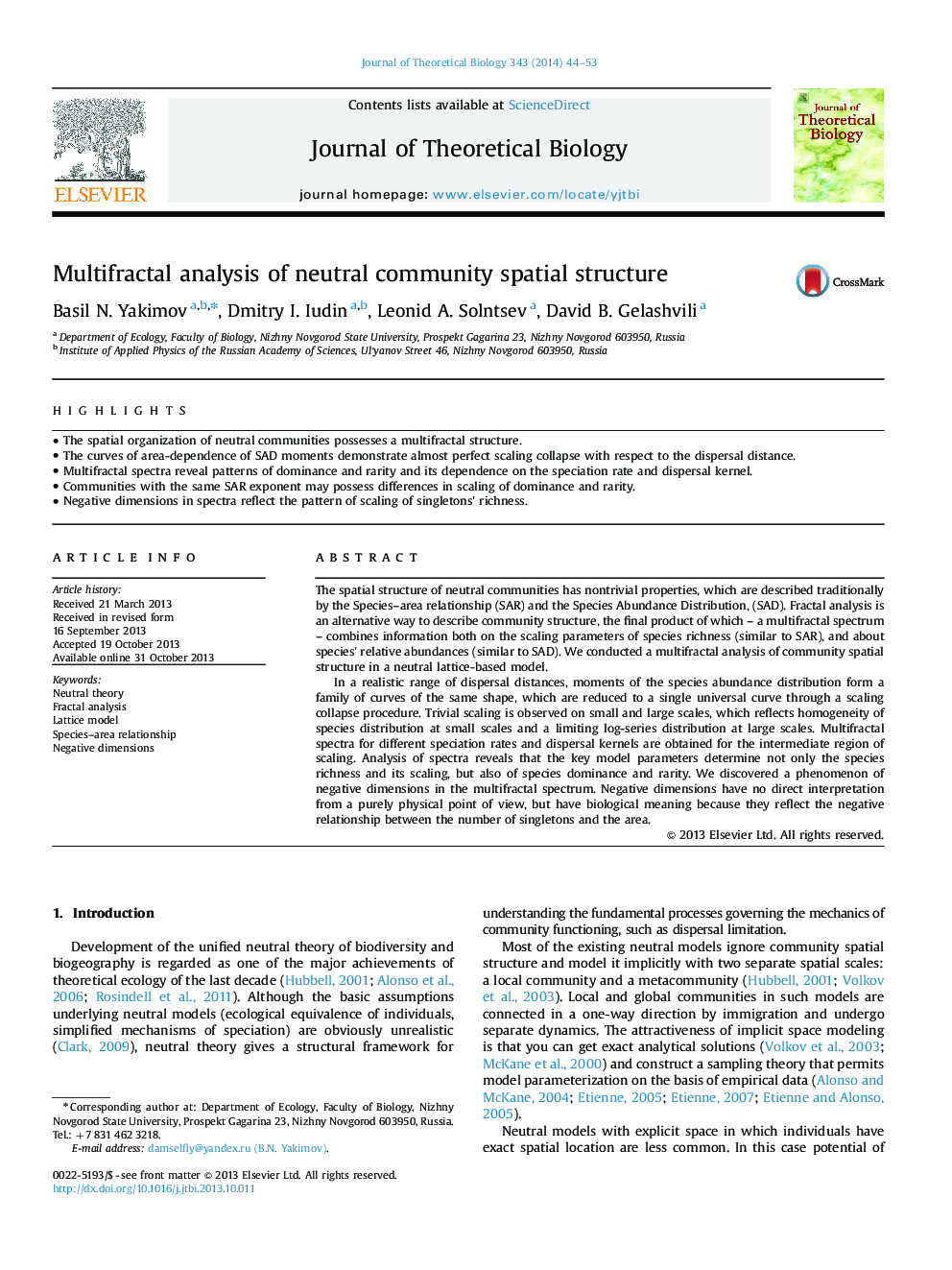| Article ID | Journal | Published Year | Pages | File Type |
|---|---|---|---|---|
| 4496271 | Journal of Theoretical Biology | 2014 | 10 Pages |
•The spatial organization of neutral communities possesses a multifractal structure.•The curves of area-dependence of SAD moments demonstrate almost perfect scaling collapse with respect to the dispersal distance.•Multifractal spectra reveal patterns of dominance and rarity and its dependence on the speciation rate and dispersal kernel.•Communities with the same SAR exponent may possess differences in scaling of dominance and rarity.•Negative dimensions in spectra reflect the pattern of scaling of singletons' richness.
The spatial structure of neutral communities has nontrivial properties, which are described traditionally by the Species–area relationship (SAR) and the Species Abundance Distribution, (SAD). Fractal analysis is an alternative way to describe community structure, the final product of which – a multifractal spectrum – combines information both on the scaling parameters of species richness (similar to SAR), and about species' relative abundances (similar to SAD). We conducted a multifractal analysis of community spatial structure in a neutral lattice-based model.In a realistic range of dispersal distances, moments of the species abundance distribution form a family of curves of the same shape, which are reduced to a single universal curve through a scaling collapse procedure. Trivial scaling is observed on small and large scales, which reflects homogeneity of species distribution at small scales and a limiting log-series distribution at large scales. Multifractal spectra for different speciation rates and dispersal kernels are obtained for the intermediate region of scaling. Analysis of spectra reveals that the key model parameters determine not only the species richness and its scaling, but also of species dominance and rarity. We discovered a phenomenon of negative dimensions in the multifractal spectrum. Negative dimensions have no direct interpretation from a purely physical point of view, but have biological meaning because they reflect the negative relationship between the number of singletons and the area.
